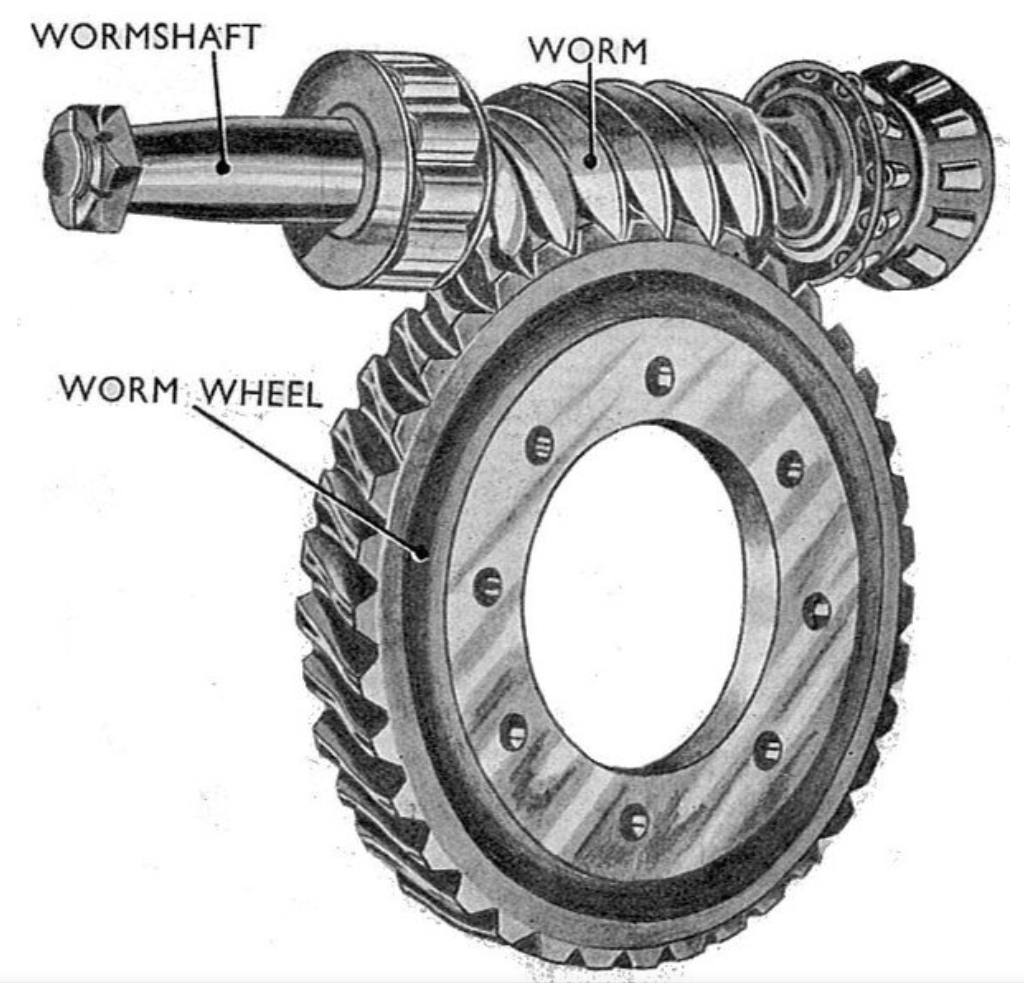
In modern new energy vehicle transmissions, worm gear systems play a critical role in torque conversion and motion control. This article analyzes the manufacturing process of ZN-type worm gears through a case study of the EP21 transmission system, focusing on material selection, geometric design, and precision machining techniques.
1. Structural Analysis of ZN-Type Worm Gears
The ZN-type worm gear mechanism features a spatial crossed-axis configuration with 90° shaft alignment. Key characteristics include:
- Straight-sided normal tooth profile in the normal plane
- Convex axial tooth profile
- Extended involute in the transverse section
The basic geometric relationships are defined by:
$$ \gamma = \arctan\left(\frac{Z_1}{q}\right) $$
$$ P_x = \pi m $$
$$ P_z = Z_1 P_x $$
Where:
γ = Lead angle (°)
Z₁ = Number of worm threads
q = Diameter quotient
Pₓ = Axial pitch (mm)
P_z = Lead (mm)
2. Design Parameters
| Parameter | Worm | Worm Gear |
|---|---|---|
| Module (mm) | 1.25 | 1.25 |
| Number of Starts/Teeth | Z₁=2 | Z₂=60 |
| Pressure Angle | αₙ=20° | αₙ=20° |
| Pitch Diameter (mm) | d₁=12.5 | d₂=75 |
| Helix Direction | Right-hand | Right-hand |
3. Manufacturing Processes
3.1 Worm Shaft Processing
| Process | Equipment | Key Parameters |
|---|---|---|
| Blank Turning | CNC Lathe | Ø14±0.1mm |
| Thread Milling | 5-Axis Mill | Pitch error ≤0.02mm |
| Heat Treatment | Induction Hardener | Surface HRC 45-55 |
| Grinding | Thread Grinder | Ra 0.4μm |
The critical thread grinding process requires precise wheel profiling using diamond dressers. The grinding equation is expressed as:
$$ h_a = m(1 + x) $$
$$ h_f = m(1.2 – x) $$
Where:
hₐ = Addendum height (mm)
h_f = Dedendum height (mm)
x = Profile shift coefficient
3.2 Worm Gear Manufacturing
| Process Stage | Tolerance | Tool Specification |
|---|---|---|
| Blank Casting | CT7 | Sn10Pb1 Bronze |
| Hobbing | DIN 8 | Special Hob (m=1.25) |
| Deburring | Ra 1.6μm | Ceramic Brush |
The hobbing process requires precise center distance calculation:
$$ a = \frac{1}{2}(d_1 + d_2) + xm $$
$$ = \frac{12.5 + 75}{2} + 0.2 \times 1.25 = 44.25\text{mm} $$
4. Quality Control Metrics
Critical inspection parameters for worm gears include:
- Tooth contact pattern ≥60%
- Backlash: 0.08-0.12mm
- Lead deviation ≤0.015mm
- Tooth thickness tolerance: ±0.03mm
The manufacturing process verification shows:
$$ \text{Process Capability } C_{pk} = 1.67 $$
$$ \text{Concentricity} = 0.025\text{mm} $$
5. Technical Innovations
Key advancements in worm gear manufacturing include:
- Adaptive CNC grinding with real-time thermal compensation
- Multi-axis synchronized hobbing technology
- Machine learning-based tool wear prediction
These innovations improve production efficiency by 40% while maintaining positional accuracy within:
$$ \Delta P = \sqrt{(\Delta X)^2 + (\Delta Y)^2} \leq 0.01\text{mm} $$
6. Conclusion
The developed manufacturing process for ZN-type worm gears demonstrates excellent consistency in mass production, achieving:
- 99.7% first-pass yield rate
- 35% reduction in cycle time
- Surface durability exceeding 1 million cycles
This methodology provides a reliable reference for high-precision worm gear manufacturing in electric vehicle applications.
